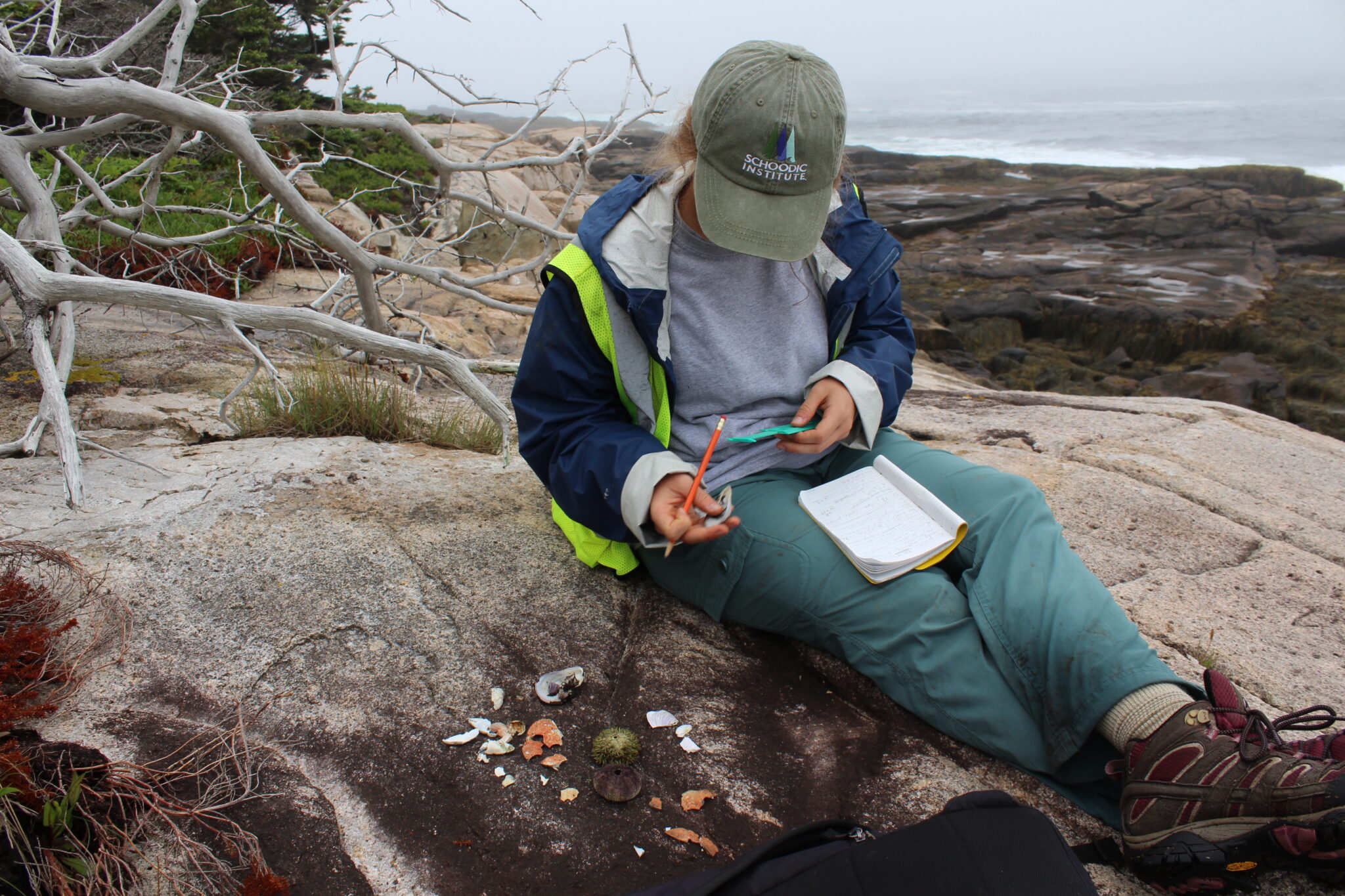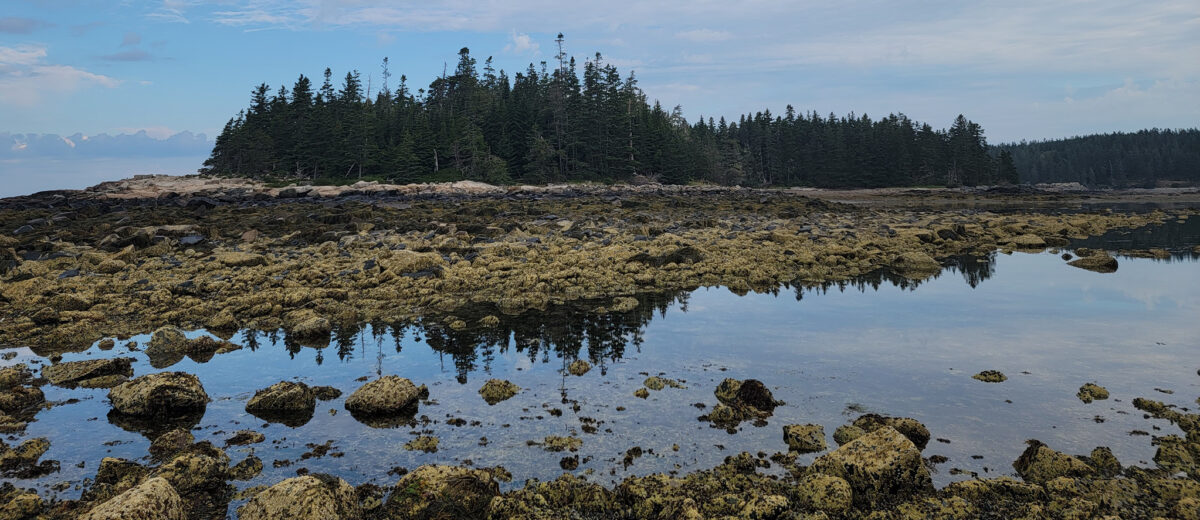by Abby Omaña, photos by Catherine Wang and Catherine Schmitt
Recently, reflecting upon my first three years of college, I felt as though I was missing something. Policy classes, check. Economics classes, also check. History, philosophy, language – all checked. But science classes? Biology? Ecology? Chemistry? Physics? None checked.
I study science policy – the social interactions with science – but not the big beast itself.
Three fourths of the way through my degree, and I had successfully avoided the practice of science. No labs, no field work, no data collection. “You’re not actually a science person,” I would tell myself. Who would I be to try to step into that world?
 Flash forward a couple of months, and I am here, in Acadia National Park, working as a Science Research Intern for Schoodic Institute. I decided to pursue field research experience in an effort to bridge my understanding of the policy world to the science world. I am actually doing science, and I am questioning why I was ever hesitant before.
Flash forward a couple of months, and I am here, in Acadia National Park, working as a Science Research Intern for Schoodic Institute. I decided to pursue field research experience in an effort to bridge my understanding of the policy world to the science world. I am actually doing science, and I am questioning why I was ever hesitant before.
This summer I joined Schoodic Institute’s Cross-System Subsidies project, which focuses on the transfer of energy between marine and forest ecosystems on Schoodic Point. With the ocean neighboring the trees, Acadia is perfectly equipped for the existence of these aquatic-terrestrial subsidies – or the flow of nutrients and energy between water and land environments. This nutrient exchange is vital for providing what might otherwise be scarce or even unavailable within an ecological community, and the goal of this study is to quantify the rate at which these subsidies are occurring.
Have you ever been along the rocky shore or in the first few meters of the coastal forest and seen marine shells scattered about? The remains of crabs, mussels, urchins, and snails on rocks and along the forest floor are all evidence of these community interactions. While cracked shells on shore are most likely remnants of a sea gull’s feast, those found in the forest come from small mammals catching their food in the intertidal zone. The area of the shore that is underwater during high tide and exposed during low tide serves as a hunting ground for animals like otters, minks, and foxes, who then bring their food from the intertidal zone back under the trees to eat it – leaving a clear example of marine-to-forest subsidies in action.
I quickly grew familiar with these subsidies and began noticing them everywhere, despite not knowing the term existed a few months ago. I watched an otter climb out of the water with something in its mouth, and I knew it would retreat to the forest to eat its catch, leaving the scraps there to break down into the soil. I watched sea gulls pluck crabs out of the water and hover twenty feet in the air, dropping their food on the rocks, cracking the shell, and accessing its meat. All of these actions are part of an essential and dynamic ecological system that is effectively understudied yet all around us when given attention.
Through my research this summer, I learned about the habits and preferences of animals living on Schoodic Point. I found more shells and other marine fragments on Pond Island, a small island difficult to reach even at low tide, compared to the larger Big Moose Island, with its roads and foot traffic. It seems that the animals appreciate having a place to themselves, where they can eat blue mussels in peace, which overwhelmingly seemed to be their favorite snack.
To me, these findings are evidence of the importance of keeping spaces like Pond Island for the animals, not only out of responsibility and respect, but also out of wonder. What is it that the animals are up to these days? What do they leave behind when they are living their best, most natural lives? By protecting places like Pond and Big Moose islands, the National Park Service maintains the possibility of wonder for visitors, including scientists.
My work this summer surprised me. I didn’t realize that by avoiding the practice of science, I was also missing curiosity, discovery, and understanding. Science is not the big beast I thought it was; in fact, science is for everyone, which is the most remarkable thing about it.
I am surprised that I am a science person. Go find out for yourself – you might be surprised, too.

